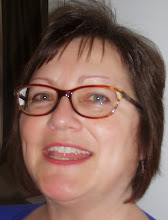The
Bedford Music Hall
This
short piece was inspired by my mum’s memories of being taken to see shows at
the Bedford in Camden Town as a girl. She remembers going there with her mum,
brothers and sister at the age of about 9 (1941) and sitting up in the gods (9d
a ticket), watching magicians, tap dancers, chorus girls and all the famous
acts of the day: Tommy Trinder, Two-Ton Tessie O’Shea, Max Miller etc. A
highlight she particularly remembers was a high wire act over the heads of the
audience down onto the stage (no safety net in those days!). And, of course, the
chance to sing along to the patriotic songs designed to lift everyone’s
spirits….
 |
| The Bedford 1904 |
 In the second half of the 19th
century, music hall was the predominant form of working-class entertainment. In
1878 London boasted 78 large music halls and over 300 smaller venues. The halls
had their origins in the Theatre Regulation Act of 1843 which prohibited
drinking in theatre auditoriums but allowed it in saloon theatres, i.e. small
venues attached to public houses (like the Bedford). Before long, professional
‘chairmen’ were introduced to manage proceedings and book acts. Unlike
mainstream theatres, which enjoyed ever higher levels of respectability, music
halls stayed closer to their working-class roots. With alcohol flowing freely,
the entertainment became increasingly risqué, relying on liberal use of puns
and innuendo.
In the second half of the 19th
century, music hall was the predominant form of working-class entertainment. In
1878 London boasted 78 large music halls and over 300 smaller venues. The halls
had their origins in the Theatre Regulation Act of 1843 which prohibited
drinking in theatre auditoriums but allowed it in saloon theatres, i.e. small
venues attached to public houses (like the Bedford). Before long, professional
‘chairmen’ were introduced to manage proceedings and book acts. Unlike
mainstream theatres, which enjoyed ever higher levels of respectability, music
halls stayed closer to their working-class roots. With alcohol flowing freely,
the entertainment became increasingly risqué, relying on liberal use of puns
and innuendo. |
| Bedford Theatre 1949 |
The second hall opened in 1899 as the “Bedford
Palace of Varieties” and soon gained a reputation as one of London’s premier
music halls. It had a grand French Renaissance frontage facing onto the high
street, with mansard roofs and a copper dome rising some 60feet above street
level. This fancy theatrical style was very much in vogue for the
end-of-century music halls, which were generally larger and finer than most
West End theatres. Often packed to the rafters, the auditorium in music halls
at this time invariably became filled with cigarette smoke. Perfume was sprayed
around in an attempt to offset the odour; many premises dating from the 1880s
onwards (the “New Bedford” was one of them) also incorporated a useful design
feature - a sliding roof that was opened periodically to allow the fug to
escape!
 |
| Marie Lloyd |
Many of the big music hall stars appeared
at the Bedford: Charlie Chaplin, Gracie Fields and, of course, Marie Lloyd who declared
it to be her favourite venue. Lloyd is known to have had two versions of songs
such as ‘She’d Never Had Her Ticket Punched Before’ – one where the real
meaning was made absolutely clear, and
another reserved for the ears of the licensing authorities!
 |
| The Old Bedford, Sickert 1895 |
Although little photographic material
remains of the Bedford in its heyday, we can get an idea of the sumptuous
interior through the paintings of the Camden Town Group, notably those of
Walter Sickert. Influenced by Degas’ paintings of Parisian life, Sickert
started painting music halls and the Bedford, known for its raucous
performances and boisterous audiences, became one of his favourite haunts. So
keen was he to capture the atmosphere of the theatre that he returned night
after night to sketch there. In 1907, he was renting four properties in close
proximity to the Bedford, including studios on Mornington Crescent and
Brecknock Road.
 |
| Awaiting demolition in the 1960s |
But already by the last quarter of the
19th century the music hall tradition was taking a downturn. Its
demise was hastened firstly by new LCC fire regulations under which many
premises were forced to close and, secondly, by rising prosperity and a taste
for luxury which led to larger, more sumptuous halls providing entertainment
for a whole district rather than local neighbourhoods. And of course, the birth
of cinema was just round the corner….
By 1903 there were only 44 halls left,
compared to nearly 400 a quarter of a century before. The Bedford’s fortunes
also declined. It was used as an ABC cinema from 1933 to 1939, when it was converted
back to a variety theatre. In 1939 it was used as the location for the film
‘Trottie True’, the tale of a young girl’s rise to fame as a music hall star.
The Bedford’s doors finally closed in
1951 and the building was demolished in 1968-9.
London in the Nineteenth Century Jerry White (2007)
London Overlooked Geoffrey Fletcher (1964)
Camden Town and Kentish Town Then and Now in Colour Marianne Colloms & Dick Weindling (2012)



0 Comments:
Post a Comment
Subscribe to Post Comments [Atom]
<< Home